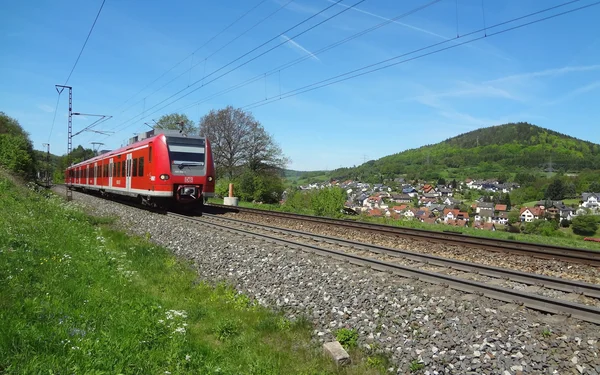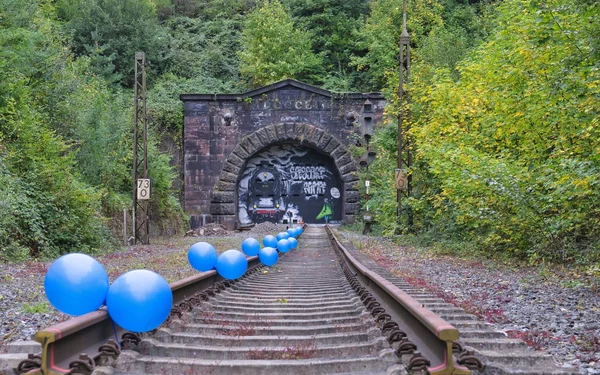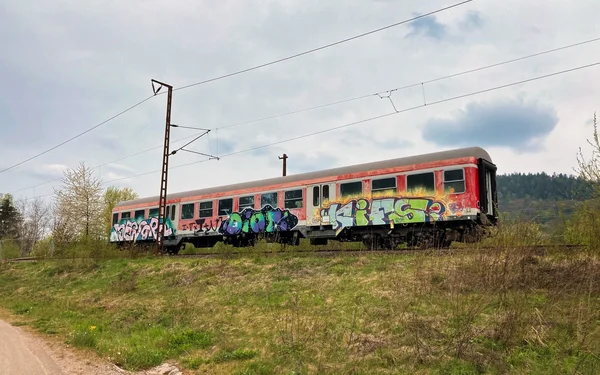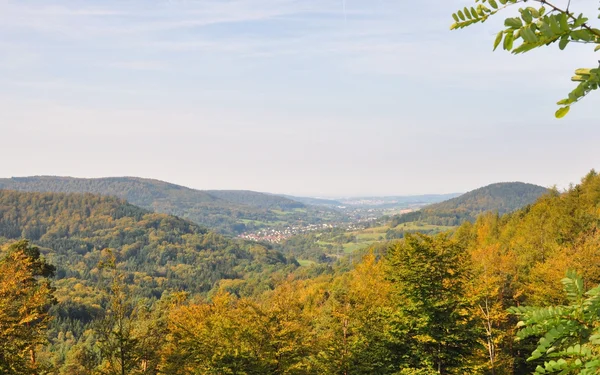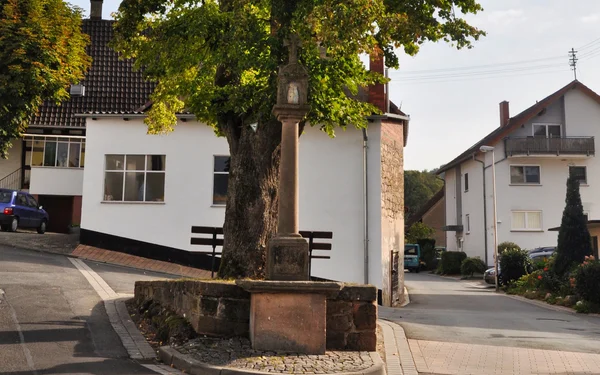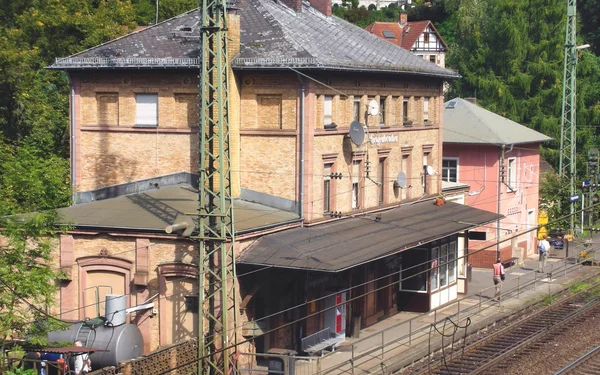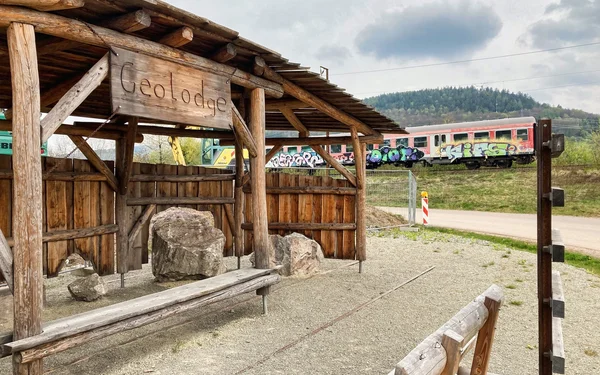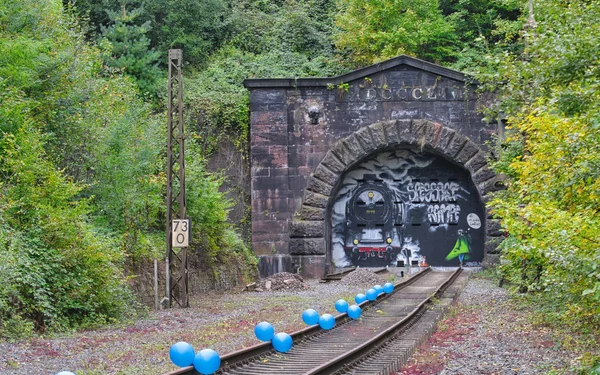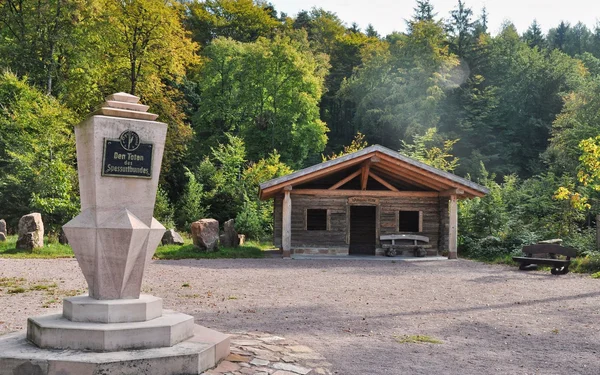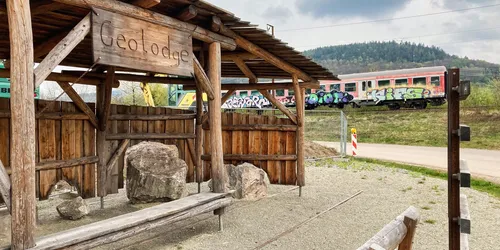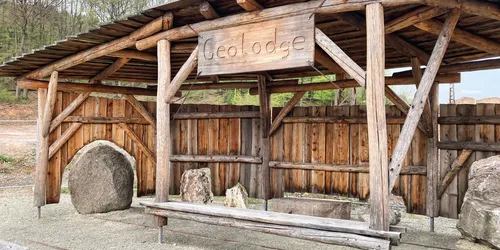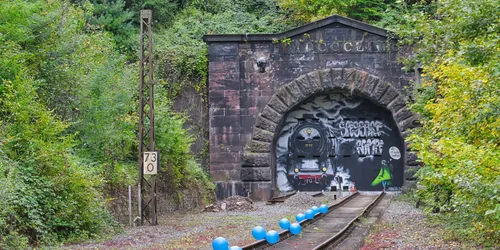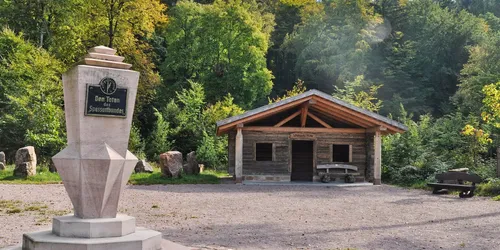From the Spessart village of Laufach to Heigenbrücken
Combine culture and nature on a hike in the Spessart. Along the European Cultural Trail, you can learn more about the regional railway and industrial history of the Spessart.
Laufach
6 h
14 km
Railway enthusiasts are familiar with the Spessart ramp, which trains have used since 1854 to cross the low mountain range on their way from the Rhine-Main region to Franconia in northern Bavaria. Without dynamite, the Schwarzkopf Tunnel was still built by hand by miners. In order to be able to shorten the length of the tunnel at a greater height, the ramp, which was very steep by the standards of the time, was constructed. The result: two to three steam locomotives were needed for long-distance and goods trains to travel the section. In 2017, the Spessart ramp was decommissioned and replaced by a new route with modern tunnels.
The hike on the European Cultural Trail connects the two Spessart villages of Laufach and Heigenbrücken. Along the way, you will learn about the upheavals associated with the railway in this region characterised by raw materials and industry. You will enjoy one of the Spessart's most valuable resources: its scenic beauty.
A hiking tour for families, nature lovers, culture vultures and explorers
Start and end station
Start station
Bahnhof Laufach
3 tour steps
14 km / 6 Stunden
End station
Bahnhof Heigenbrücken
Our tip: Please make sure to check your train connection and the expected capacity before you start your journey.
Schedule
Tour starts on Bahnhof Laufach
Direction
From Laufach railway station, follow the sign of the European Cultural Routes for the entire tour: a yellow EU boat on a blue background - here with a railway in the centre. You take Bahnhofstraße in an easterly direction. After crossing the Laufach stream, continue uphill on Buchenlandstraße until you reach the path halfway up, which runs above the Düker ironworks.
Above Laufach, it is worth pausing for a moment. From here, the view of the village and the surrounding area is particularly beautiful. At the same time, this is where the changed route of the railway line through the Spessart began in 2017, for which a total of four new tunnels were bored.
Laufach has its origins in iron ore and is one of the oldest industrial locations in Germany. Industrialisation in the 19th century changed the situation in the region considerably. Production moved to urban centres such as the Rhine-Main area, leaving the people of Spessart behind and impoverishing them. However, the construction of the Würzburg-Aschaffenburg railway line kept the Laufach factory's order books full until 1854. With the completion of the "Ludwigs-Westbahn" railway between Bamberg and Hanau in October 1854, a new change began. The Spessart communities were connected to the wider world and living conditions improved.
The railway line and tunnels are still visible in the landscape today. In 2017, the Schwarzkopf Tunnel, which opened in 1854, was closed and a completely new route was bored through the main ridge of the Spessart.
Have you had your fill? Then continue along the railway line to the Spessartrampe leisure and recreation facility, where you have the opportunity to eat your fill. If the weather is good, you can enjoy a hearty meal at the "Seebachblick" restaurant (Tel. 06093 993180).
Im Seebachtal 1
63846
Laufach/ OT Hain
